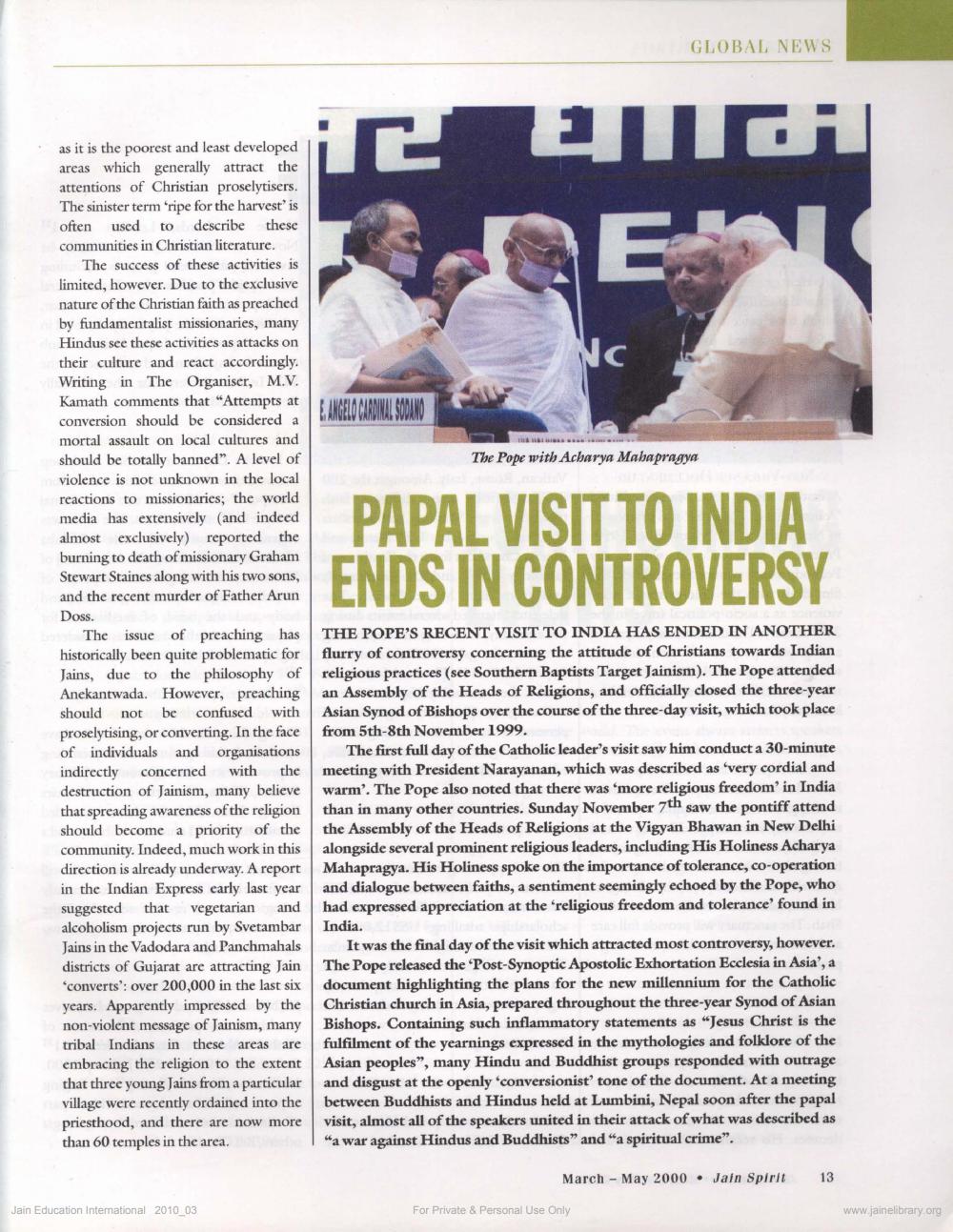________________
iG ic
as it is the poorest and least developed areas which generally attract the attentions of Christian proselytisers. The sinister term 'ripe for the harvest' is often used to describe these communities in Christian literature.
The success of these activities is limited, however. Due to the exclusive nature of the Christian faith as preached by fundamentalist missionaries, many Hindus see these activities as attacks on their culture and react accordingly. Writing in The Organiser, M.V. Kamath comments that "Attempts at conversion should be considered a mortal assault on local cultures and should be totally banned". A level of violence is not unknown in the local reactions to missionaries; the world media has extensively (and indeed almost exclusively) reported the burning to death of missionary Graham Stewart Staines along with his two sons, and the recent murder of Father Arun Doss.
The issue of preaching has historically been quite problematic for Jains, due to the philosophy of Anekantwada. However, preaching should not be confused with proselytising, or converting. In the face of individuals and organisations indirectly concerned with the destruction of Jainism, many believe that spreading awareness of the religion should become a priority of the community. Indeed, much work in this direction is already underway. A report in the Indian Express early last year suggested that vegetarian and alcoholism projects run by Svetambar Jains in the Vadodara and Panchmahals districts of Gujarat are attracting Jain 'converts': over 200,000 in the last six years. Apparently impressed by the non-violent message of Jainism, many tribal Indians in these areas are embracing the religion to the extent that three young Jains from a particular village were recently ordained into the priesthood, and there are now more than 60 temples in the area.
Jain Education International 2010_03
EANGELO CARDINAL SOUND
PUGU Tdi
DE
NC
GLOBAL NEWS
The Pope with Acharya Mahapragya
PAPAL VISIT TO INDIA ENDS IN CONTROVERSY
THE POPE'S RECENT VISIT TO INDIA HAS ENDED IN ANOTHER flurry of controversy concerning the attitude of Christians towards Indian religious practices (see Southern Baptists Target Jainism). The Pope attended an Assembly of the Heads of Religions, and officially closed the three-year Asian Synod of Bishops over the course of the three-day visit, which took place from 5th-8th November 1999.
The first full day of the Catholic leader's visit saw him conduct a 30-minute meeting with President Narayanan, which was described as 'very cordial and warm'. The Pope also noted that there was 'more religious freedom' in India than in many other countries. Sunday November 7th saw the pontiff attend the Assembly of the Heads of Religions at the Vigyan Bhawan in New Delhi alongside several prominent religious leaders, including His Holiness Acharya Mahapragya. His Holiness spoke on the importance of tolerance, co-operation and dialogue between faiths, a sentiment seemingly echoed by the Pope, who had expressed appreciation at the 'religious freedom and tolerance' found in India.
It was the final day of the visit which attracted most controversy, however. The Pope released the 'Post-Synoptic Apostolic Exhortation Ecclesia in Asia', a document highlighting the plans for the new millennium for the Catholic Christian church in Asia, prepared throughout the three-year Synod of Asian Bishops. Containing such inflammatory statements as "Jesus Christ is the fulfilment of the yearnings expressed in the mythologies and folklore of the Asian peoples", many Hindu and Buddhist groups responded with outrage and disgust at the openly 'conversionist' tone of the document. At a meeting between Buddhists and Hindus held at Lumbini, Nepal soon after the papal visit, almost all of the speakers united in their attack of what was described as "a war against Hindus and Buddhists" and "a spiritual crime".
March May 2000 Jain Spirit 13
For Private & Personal Use Only
www.jainelibrary.org




